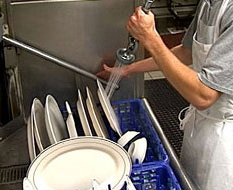While I have covered many aspects of operations and the fast-casual segment in past columns, the election season has prompted me to think about the big picture and our industry’s place in society.
The other day a friend of mine tried to convince me to get out of my dead-end career field so that I could join his $10-billion-per-year industry. Over the years, I have heard those kinds of comments about our industry numerous times, as I am sure you have. Politicians from both sides of the spectrum and the media often use entry-level restaurant positions as their examples of bad jobs. For far too many years, many of us have simply taken this beating without really standing up for all of the millions of people who have made better lives for themselves and their families through our industry. Starting today, I am going to do a better job of telling the true story of America’s restaurants, and I encourage you to do the same.
This true story is more powerful and larger than that of any other industry. While the media and politicians focus on the first career step into our industry, we must focus on the long-term possibilities afforded those who work hard.
I have said this many times before, but the restaurant industry is the greatest and most forgiving meritocracy on Earth. In many other fields a specialized education is required to make the first step toward a career. True, you can go to a fancy culinary school before entering the industry, but many thousands more have started as dishwashers or prep cooks and worked their way up to being executive chefs or even owners of their own restaurants. Your hard work and effort is what determines your success in a restaurant, not your class status or education.
More importantly, we offer a chance at redemption and a fresh start that has been a theme in American history, culture, and literature since the first non-native settlers made their way to the continent. What you did yesterday or last year does not matter. Today’s shift in the store is what matters. On a macro scale, this is both the best and most challenging thing about our industry. Yesterday may have been the best or worst shift ever, but everything starts fresh when the first customer walks in the door at opening time. On an individual level, you can overcome any of your past challenges, problems, or mistakes just by working hard and learning each day. While I am proud of the awards won by restaurants I have worked for, I am most proud of the fact that I have helped homeless people, immigrants, recovering addicts, and those from poor financial and academic backgrounds become successful. I am certain that would not have been possible had I worked in other industries.
Another large part of our story is the education we give our workers in the most important life skills necessary for success. Again, the media focuses on the factory production aspects of what we do and not on the bigger picture. Restaurants are incredibly complicated organisms where incredible levels of communication and people skills are required just to get through the day, and organizational and planning techniques are required to do things well and profitably.
In fact, most other industries follow us in many areas although they might not be willing to admit it. The business world has spent the last years focusing on multiculturalism and attempting to become more inclusive. Any look at our amazingly diverse workforce and it’s easy to see that we have been making this happen and work for years. The academic business world has been promoting the team model as a revolutionary part of MBA training over the last decade. And teamwork has been essential to what we do since the days of Escoffier.
How did I educate the friend I mentioned at the beginning of this column? I did it the same way we should teach our employees on day one, politicians, the media, and academics. First of all, I provided facts about the industry (thanks to the National Restaurant Association) telling how we have $580 billion in yearly sales and employ 12.7 million people in 945,000 locations. The NRA or state association can even provide the numbers of establishments and employees in each congressional district.
Second, I brought him to the NRA website and showed him two great videos featured on their homepage that tell our story.
Finally, I finished up by connecting these videos with personal stories of people I have worked with and how I have grown in the industry. I challenge each one of us to adopt four skeptics from the business, academic, media, and political worlds and use the same simple techniques to help them learn about our industry. This will only take about 30 minutes each. Simply telling our story at the next career day at a local school and during your company orientations can make a huge difference.
Our story is not just on the plate—it is in our people.











